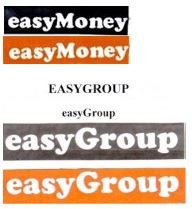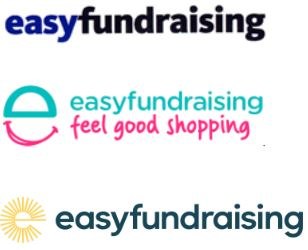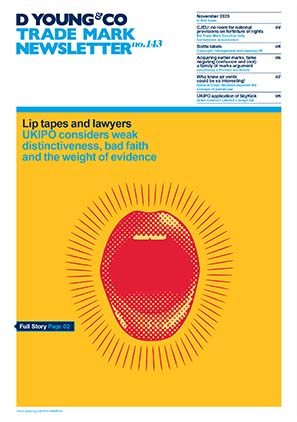Easier said than done: lessons for brands from the latest easyGroup loss
There are lessons for brands and trade mark owners from the recent easyGroup loss in easyGroup Limited v easyfundraising Limited and others.
Descriptive = difficulties
Does your trade mark or brand describe what you do? This can be super helpful. Customers will quickly understand the products or services you provide. It can even be memorable. But in the land of trade marks a descriptive name can be a nuisance, particularly when it comes to enforcing your rights. The basic argument is that consumers will either not focus on, or be unable to differentiate between, the descriptive elements in brands. Unless there is some other element in the brand that consumers recognise, enforcement of a descriptive trade mark can be difficult as consumers will not be confused by (or create a link between) two different brands just because both brands share a descriptive feature.
easyGroup v easyfundraising
This is increasingly becoming an issue for easyGroup’s companies in litigation before the UK courts. Most recently, it failed to demonstrate that its rights in easyJet, easyHotel, easyMoney and easyGroup (amongst others) were infringed by easyfundraising, for the following reasons:
- “Easy” is descriptive. For example, the “easy” in EasyJet is “descriptive of the uncomplicated and direct way in which flights on easyJet could be booked and its services used”. Uncomplicated is not the word people generally use to describe squeezing a week’s worth of clothing into a tiny on-board bag, but that is beside the point for trade mark claims.
- The adjective “easy” is commonly used as a descriptive term by many non-easyGroup brands.
- What is distinctive about the easy+ signs is the orange/white colour scheme font and the cooper black font. The parts of the easyfundraising signs that did not contain the word “easy” were different to the easy+ brand. The word “fundraising” was different, the font was different, and there was no use of the orange/black colours. The easyfundraising marks were found to have little similarity to the easy+ brands.

easyHotel/EASYHOTEL

No trade mark is an island
When it comes to trade mark enforcement, understanding how products and services are provided under a brand name is really important. It is not generally enough for there to be a simple similarity between the visual elements of the brands in issue. It is important for trade mark owners to understand what goods and services fall under their trade marks, and whether the activities of another party actually maps onto those goods and services. If they do not, this can weaken an infringement claim.
easyGroup v easyfundraising
This is another issue that easyGroup encountered in the litigation against easyfundraising. The services that easyfundraising provided can be broadly split into two categories, B2C and B2B:
B2C: “you spend, brands donate”
Customers can access a range of retailers/brands via the easyfundraising portal (for example, John Lewis, Argos, Pets at Home). When a purchase is made with those retailers/brands via the easyfundraising portal, the retailers/brands pay a commission to easyfundraising as a donation to a chosen charity or cause.
It was concluded that consumers using the B2C services absolutely understood that they were purchasing goods and services from the retailers/brands, and not from easyfundraising. It was obvious to consumers that they passed through and left the easyfundraising platform and went on to purchase goods and services directly with the retailers/brands.
EasyGroup tried to argue that easyfundraising were providing, for example, tourism services (that were similar to the services under the easyJet marks) and hotel services (that were similar to the services under the easyHotel marks), by providing links to travel and hotel brands/retailers via the easyfundraising portal. The reality was that easyfundraising was not offering those services. Instead, it was offering fundraising services / a platform for fundraising by retail.
B2B: retailers/brands can also pay for advertising space on the easyfundraising portal
The other angle attempted by easyGroup was that the offer of advertising space by easyfundraising was similar to the licensing services or support to licensees covered by its easyGroup mark.
The reality was that easyfundraising provided advertising and promotional services to retailer clients. There was no licensee arrangement or services provided to licensees. These fundamental differences in the services provided by easyfundraising and the services covered by the easyGroup trade marks counted against them in assessing infringement.
Confusion reigns supreme
When a trade mark owner has an issue with similar brands providing similar goods and services, an important infringement angle is that the consumers will be (or are likely to be) confused by those similar brands. Consumers will get mixed-up thinking that they are buying goods/services from the trade mark owner, but are actually buying from another company. If a brand can find real-world evidence of consumers actually being confused this can be really helpful. For example, there may be social media comments or specific complaints that demonstrate consumers have actually been confused.
The opposite is also relevant: where two similar brands have existed on the market for a long time and there is no evidence of consumer confusion. This situation can be influential in supporting the position that consumers are not (or are not likely to be) confused by the brands in question.
easyGroup v easyfundraising
This is another area where easyGroup fell down against easyfundraising. EasyGroup alleged that there was a substantial risk of confusion because average consumers would think that the easyfundraising services were connected in some way with the easy+ brands. But over the course of 19 years of side-by-side trading, there was minimal relevant evidence of actual consumer confusion. That fact, whilst not fatal, was highly persuasive in the finding that there was not (or was not likely to be) confusion between the easy+ brands and easyfundraising.
People who live in glass houses should not throw stones
It is important for brand owners to keep in mind that enforcement is not always a one-way street. Accusations of infringement are often met with counter-attacks. Those counter-attacks could focus on challenging your rights in a trade mark or pointing to activities of your company that weaken the infringement claims. Brand owners need to be aware of these vulnerabilities and factor them into their enforcement strategy.
easyGroup v easyfundraising
EasyGroup alleged (which is denied) that easyfundraising is posing as a charity when it is not. The purpose of that allegation was to demonstrate that if easyfundraising is seen as a bad apple by the public that reputational damage would rub off on the easy+ brands. The problem for easyGroup was that it (and its licensees) had made its services available through the easyfundraising portal for over a decade, generating over £1million of sales as a result.
The obvious question asked was: if easyfundraising was potentially so damaging to the reputation of the easy+ brands, why use it? The other consequence of easyGroup’s gung-ho litigation strategy? It lost some of its trade mark rights, with its easy.com and easylife marks being revoked entirely (that is, struck from the register of trade marks) and the services protected by its easyJet mark being narrowed.
Case details at a glance
Jurisdiction: England & Wales
Decision level: High Court
Parties: easyGroup Limited v easyfundraising Limited, The Support Group (UK) Limited, Ian Woodroffe and Palatine Private Equity LLP
Date: 11 September 2024
Citation: [2024] EWHC 2323 (Ch)

